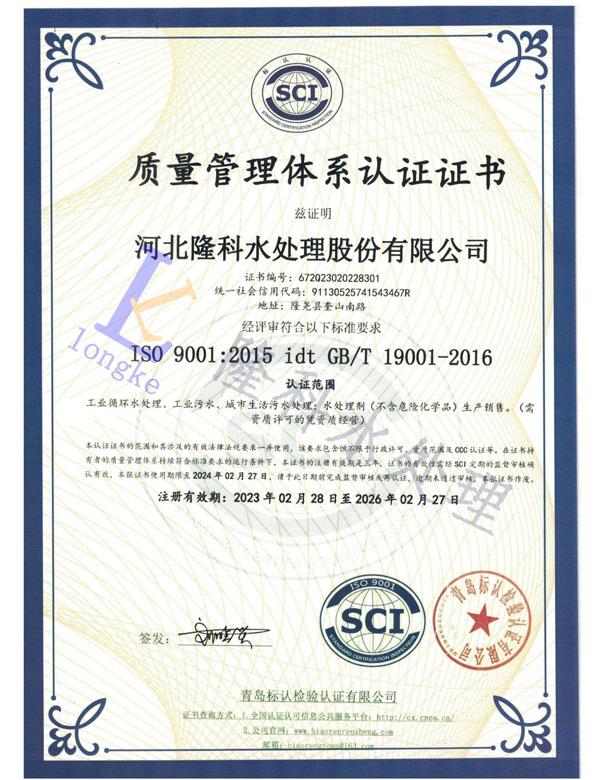pbtca
Understanding PBTCA A Comprehensive Overview
PBTCA, or 2-Phosphonobutane-1,2,4-tricarboxylic acid, is an organic compound that belongs to a class of chemicals known as phosphonates. This compound is characterized by its ability to act as a powerful chelating agent, which makes it valuable in various industrial applications. In this article, we will explore the structure, properties, applications, and environmental considerations associated with PBTCA.
Structure and Chemical Properties
PBTCA is a tricarboxylic acid with the molecular formula C7H13O9P. The structure comprises a butane backbone, with three carboxylic acid groups (-COOH) and one phosphonic acid group (-PO3H2) attached to it. This unique arrangement of functional groups allows PBTCA to form stable complexes with metal ions, which is a critical feature in its role as a chelating agent.
The compound is usually available as a white crystalline powder that is soluble in water, making it easy to incorporate into various formulations. Its high solubility and stability in solutions make it an ideal candidate for applications in both aqueous and non-aqueous environments.
Applications of PBTCA
1. Water Treatment
One of the primary applications of PBTCA is in water treatment. Given its ability to sequester metal ions, PBTCA is effective in controlling scale formation and corrosion in industrial water systems. It can bind calcium, magnesium, and other metal ions, preventing them from precipitating and causing scale buildup in boilers, cooling towers, and pipelines. This contributes to the longevity and efficiency of industrial equipment, reducing maintenance costs and downtime.
2. Detergents and Cleaning Agents
In the household and industrial cleaning products sector, PBTCA acts as a chelating agent that enhances the efficiency of detergents. By binding metal ions present in hard water, PBTCA helps in preventing the formation of insoluble compounds that can reduce the effectiveness of cleaning products. The use of PBTCA in formulations enables the production of cleaner surfaces and aids in maintaining the efficacy of active ingredients in detergents.
pbtca

3. Agriculture
In agriculture, PBTCA is utilized as a fertilizer additive. The chelating properties of PBTCA can improve the bioavailability of essential nutrients, especially micronutrients like iron, manganese, and zinc. By forming stable complexes with these nutrients, PBTCA ensures that they are readily absorbed by plants, thereby enhancing growth and yield.
4. Textile Industry
In the textile industry, PBTCA is employed in dyeing processes. It helps in fixing dyes to fabrics by preventing the interaction of metal ions that can lead to color changes and fading. By stabilizing the dye-metal interactions, PBTCA improves the quality and durability of dyed textiles.
Environmental Considerations
While PBTCA is recognized for its effectiveness in various applications, its environmental impact should not be overlooked. The biodegradability of phosphonates, including PBTCA, is a critical factor in assessing their environmental safety. Research indicates that PBTCA is relatively environmentally friendly compared to other common phosphonates. However, the potential for accumulation in the environment and its effects on aquatic organisms warrants careful consideration.
To mitigate potential environmental risks, it is essential to adhere to regulatory guidelines regarding the use and disposal of PBTCA-containing products. The adoption of green chemistry principles can also guide manufacturers in developing more sustainable formulations that minimize adverse environmental effects.
Conclusion
PBTCA is a versatile and effective chelating agent with numerous applications across different industries, from water treatment and detergents to agriculture and textiles. Its ability to bind metal ions enhances the performance of various products, making it a valuable compound in technological advancements. However, as with any chemical, responsible usage and environmental considerations must remain a priority to ensure that its benefits do not come at the expense of ecological integrity. By understanding and managing the implications of PBTCA's use, industries can harness its potential while promoting sustainability and environmental stewardship.
-
LK-319 Special Scale And Corrosion Inhibitor For Steel Plants: Advanced Solutions for Industrial Water SystemsNewsAug.22,2025
-
Flocculant Water Treatment: Essential Chemical Solutions for Purification ProcessesNewsAug.22,2025
-
Isothiazolinones: Versatile Microbial Control Agents for Industrial and Consumer ApplicationsNewsAug.22,2025
-
Scale Inhibitor: Key Solutions for Water System Scale PreventionNewsAug.22,2025
-
Organophosphonates: Versatile Scale Inhibitors for Industrial Water SystemsNewsAug.22,2025
-
Scale and Corrosion Inhibitor: Essential Chemical Solutions for Water System MaintenanceNewsAug.22,2025





